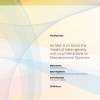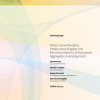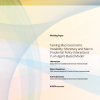The paper compares the effects of market-based and command-and-control climate policies on the direction of technical change and the prevention of environmental disasters. Drawing on the model proposed in Acemoglu et al. (2012), we show that market-based policies (carbon taxes and subsidies towards clean sectors) exhibit bounded window of opportunities: delays in their implementation make […]







